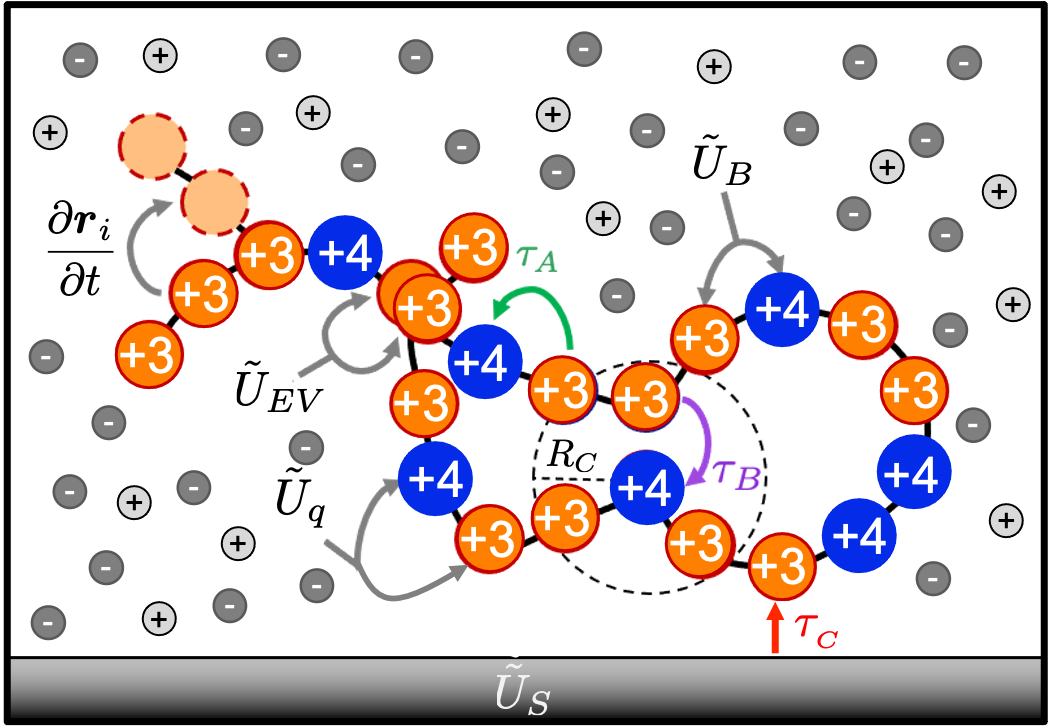2022 Annual Meeting
(131f) Diffusive Charge Transport in High-Valency Redox-Active Polymer Solutions
Authors
We have previously used simulation and theory to investigate the competition in charge transport mechanisms in RAPs for monovalent systems with implicit salt related to coil dimension and overlap concentration. Guided by our experimental colleagues synthesizing a new generation of Co, Fe, and Ru based RAPs, we sought out to understand charge transport in higher valency RAPs since these can be modified to have different self-exchange rates and accordingly different charge hopping dynamics. To account for these higher valency systems, we use a minimalistic coarse graining model combining Brownian dynamics to evolve the conformation of the polymer and a kinetic Monte Carlo update step to capture charge transport in RAPs. We modified our electrostatic potential from a Debye-Hückel approximation for monovalent systems from our previous model to a more robust Coulombic potential in its Ewald summated form for these higher valency RAP solutions with explicit salt. We also include a surface representative of an electrode to investigate the polymer-electrode charge transport via a kinetic Monte Carlo update step.
Here, we vary the intra- and inter-chain charge hopping rates to study the interplay between self-exchange rates and salt concentration on the uptake of charges and its mechanisms of diffusive charge transport in these higher valency RAPs. We perform these simulations for a single chain and multi-chain system where we show how various transport mechanisms interplay, including the intra-polymer transport of charge via self-exchange and polymer segmental motions; hopping due to inter-polymer and surface-polymer collisions; and translational diffusion of chains. Using this model, we can understand how polymer conformations impacts charge transport in redox active polymers in order to design RAPs on a molecular level to improve performance and durability of redox flow batteries.
